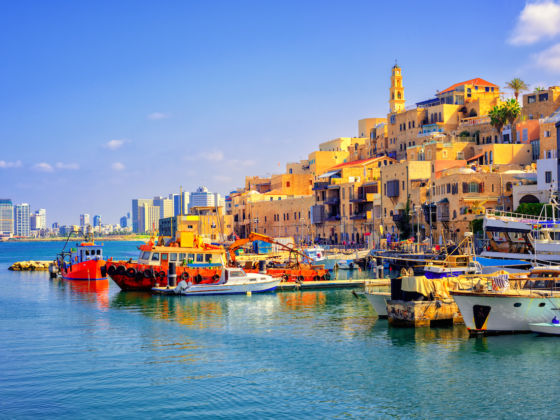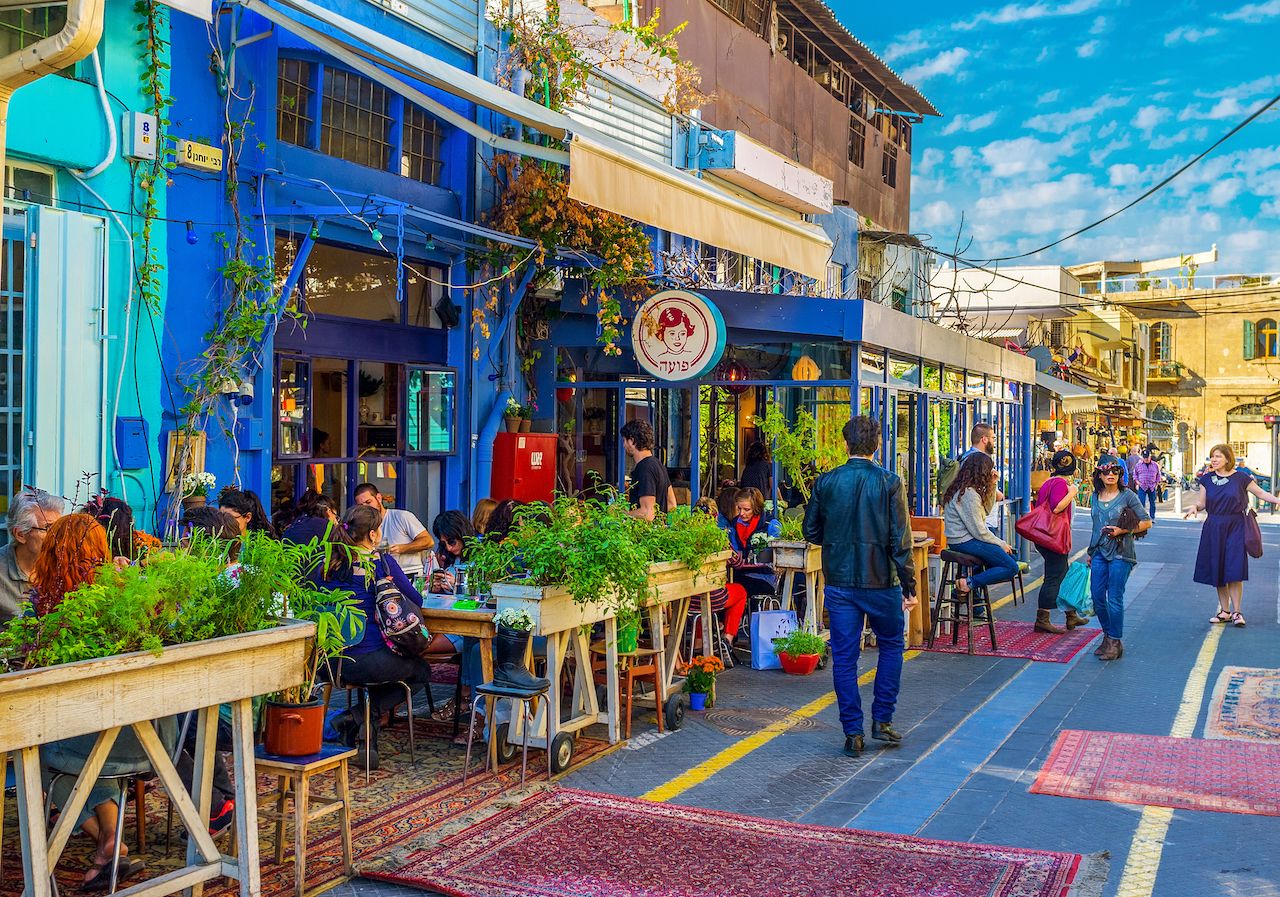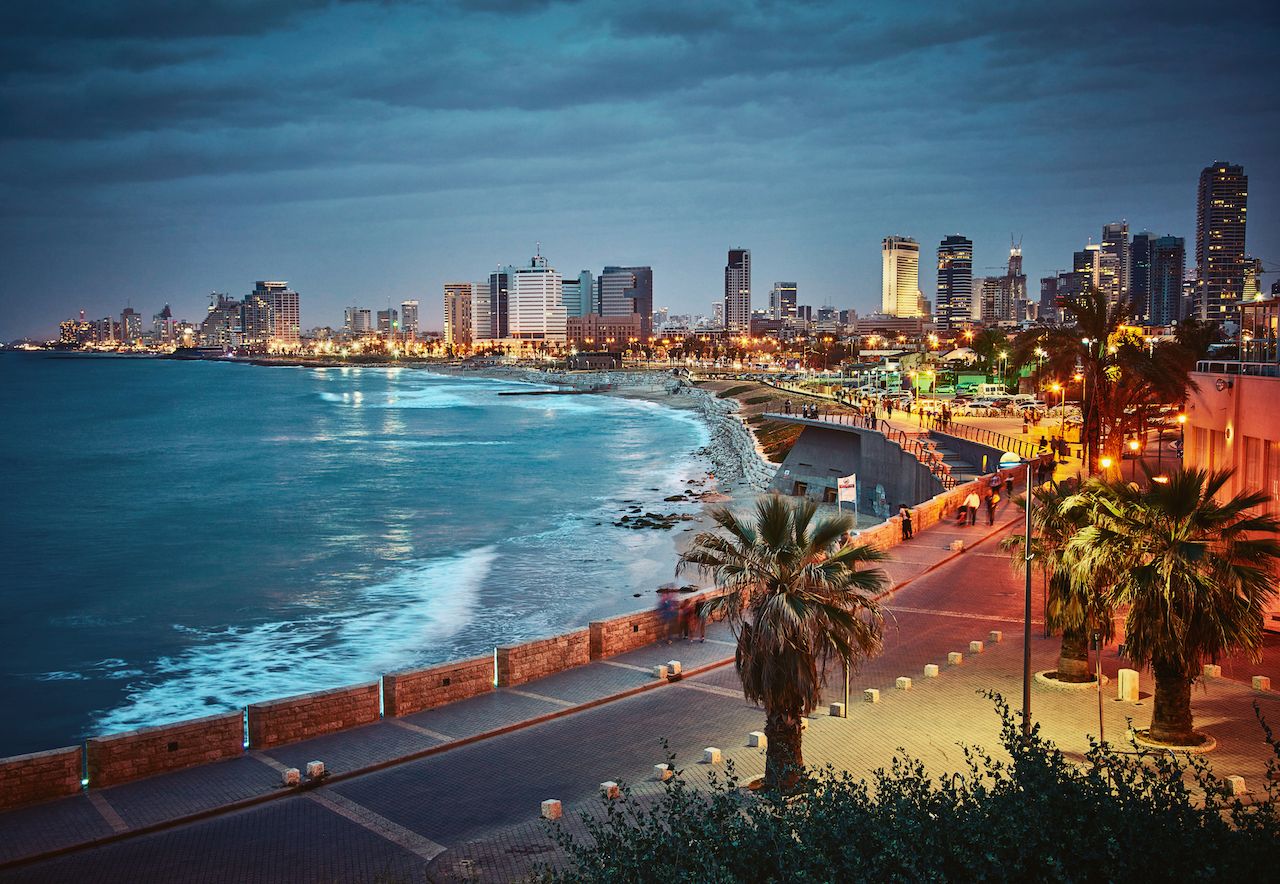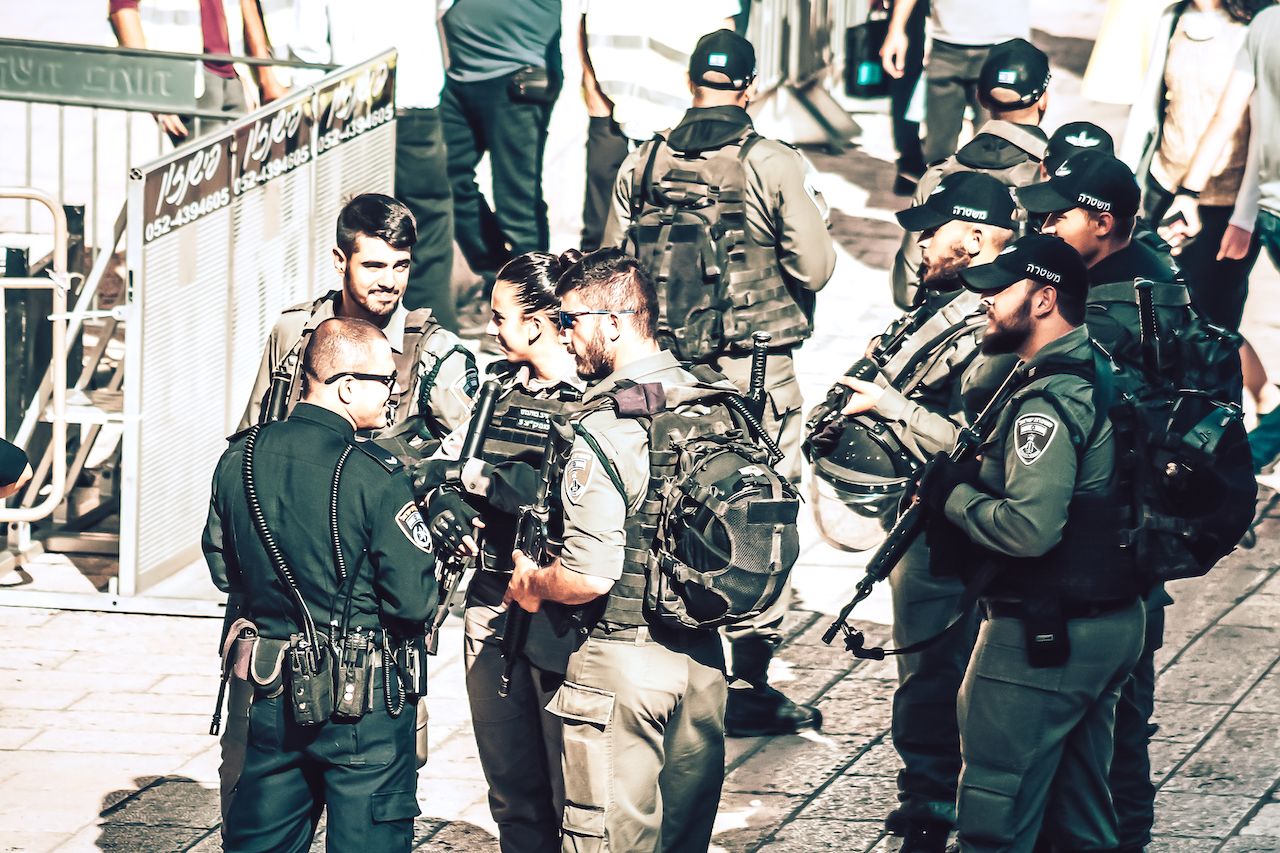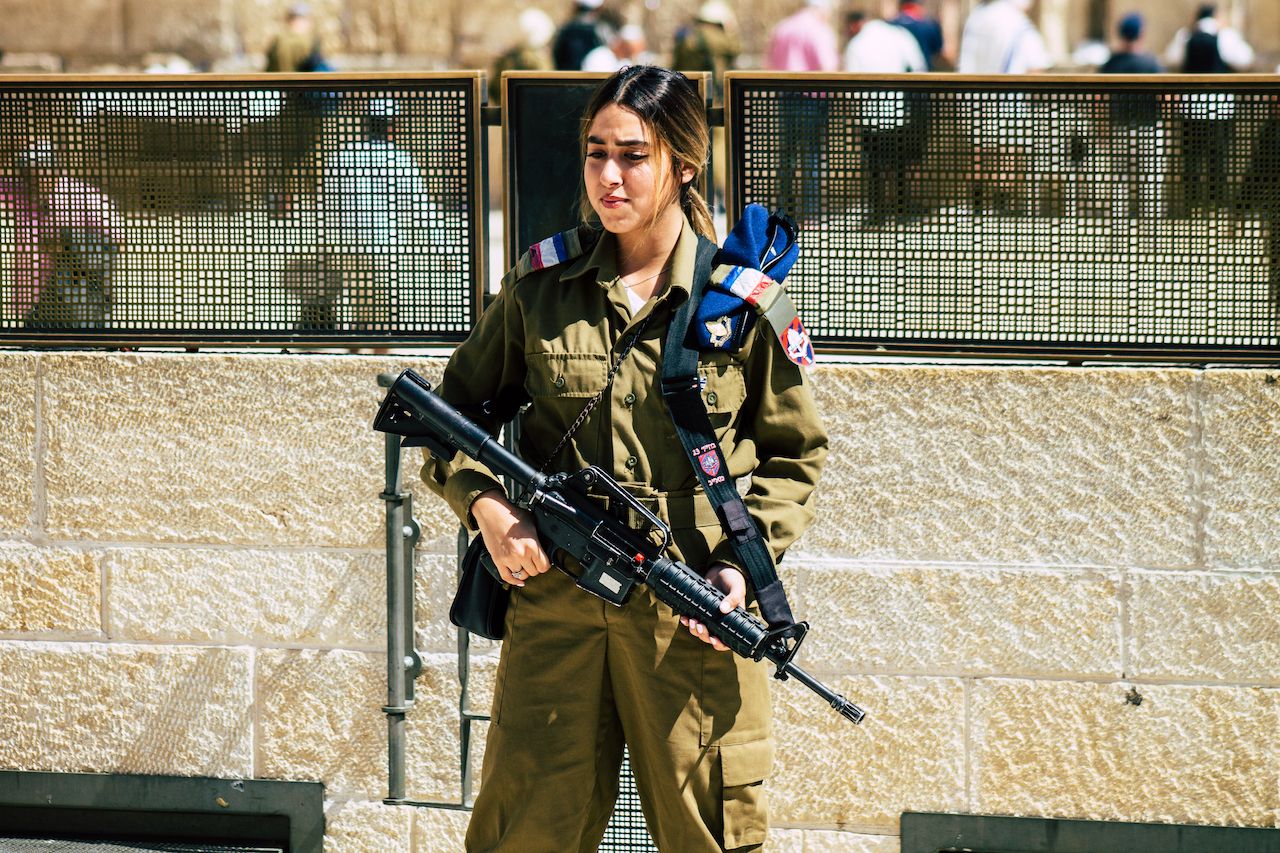I was about to devour one of the great joys of Israel, its breakfast, when the tour guide, Ofer, broke the news. Rockets launched from Gaza the night before had struck the south.
We were in the tree-lined tea house gazebo of the Port and Blue Hotel in Tel Aviv. Guests at nearby tables murmured about the unfortunate news. I put my fork down. Clearly the shakshouka, fresh hummus, and Israeli salad could wait. I turned to Ofer. A smiling Israeli Jewish man in his 60s with a calm, slightly raspy voice, he had the comforting demeanor of a wise uncle.
